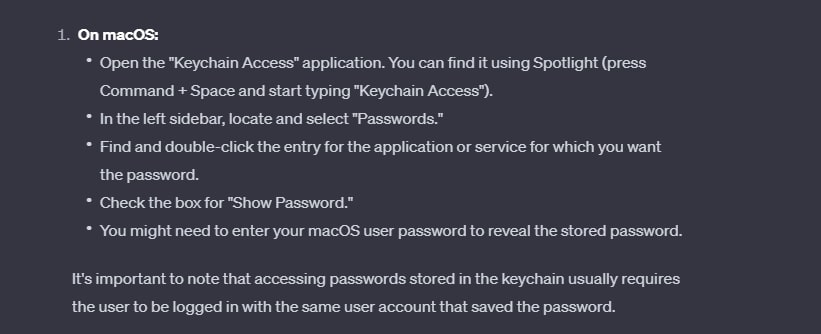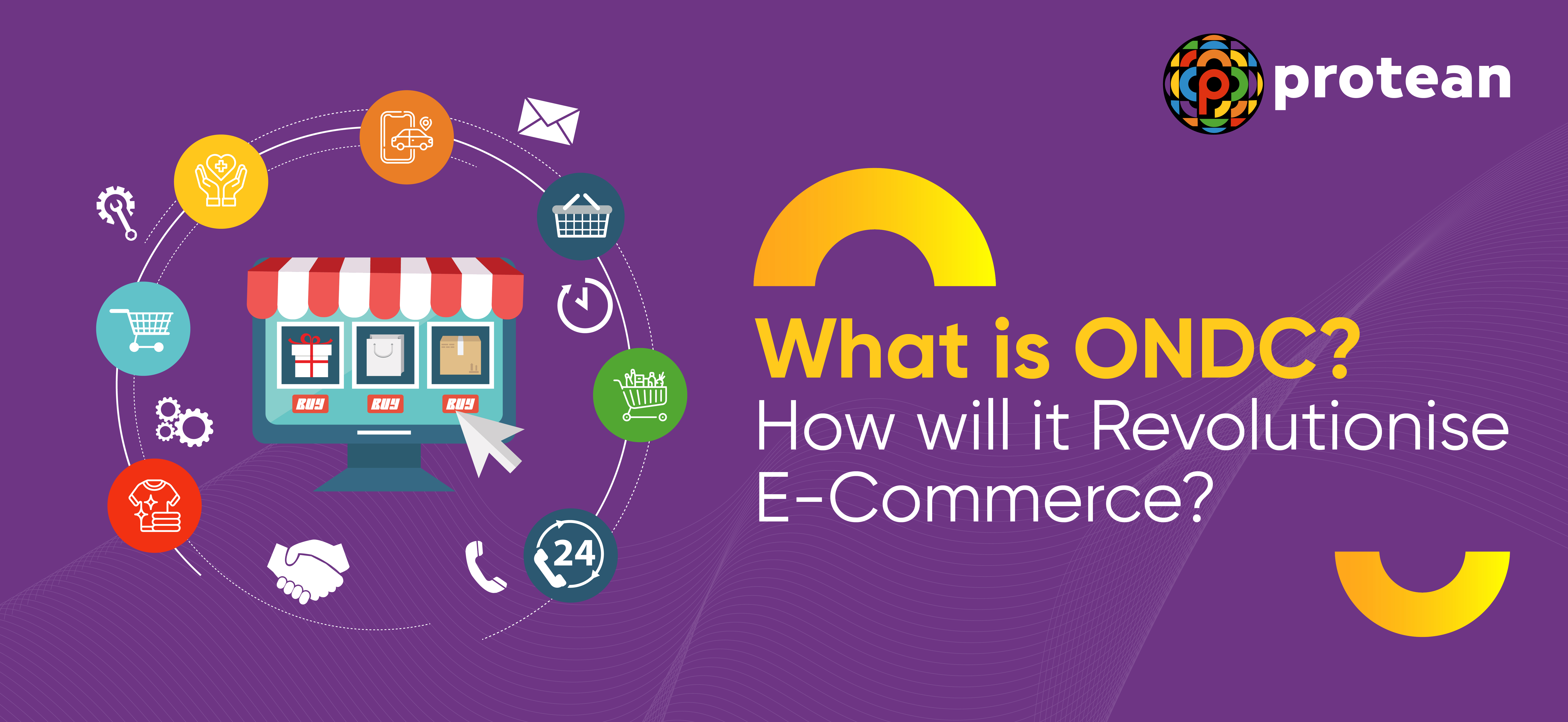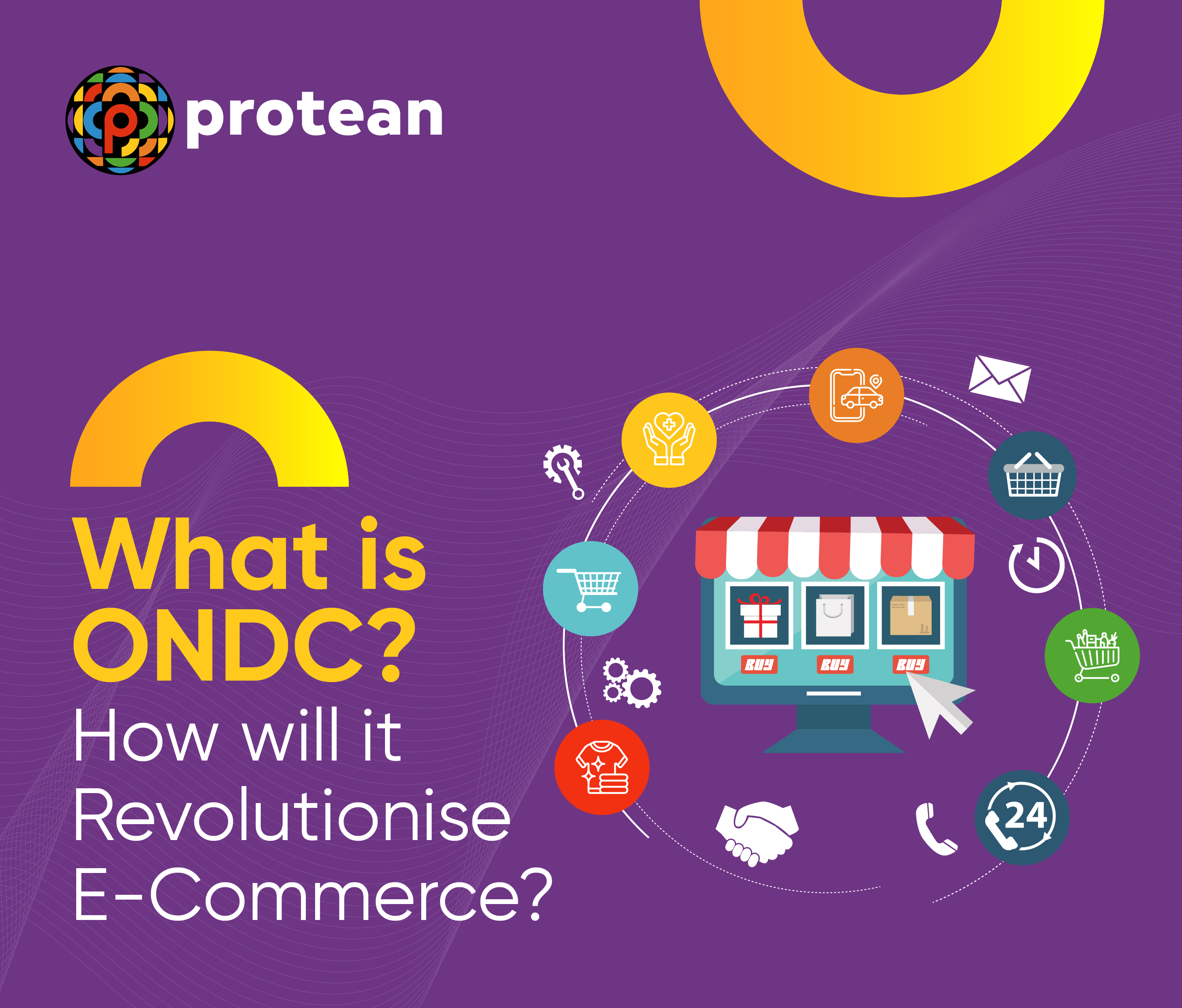
The Indian Government launched the Open Network for Digital Commerce (ONDC) campaign on 29th April, 2022 to promote local businesses across numerous sectors. All enrolling companies agreed to operate through a network supported by open protocols. As a result, sellers and suppliers who previously suffered from a lack of scaling opportunities could leverage the integrated technologies to expand their reach.
With the growing acceptance of ONDC, online shopping and ordering of services like mobility, daily help, software solutions, etc., are expected to go up even in rural areas. This will benefit consumers and Kirana store owners equally by developing trust among all network participants.
Keep reading to understand how this public initiative works and its impact on Indian e-commerce.
What Is ONDC & How Does It Work?
The Open Network for Digital Commerce is a public online network for merchants and customers. The ONDC platform is based on cutting-edge infrastructure aiming to democratise the Indian ecommerce space. It seeks to promote MSMEs by increasing their scale of operations and reaching a wider customer base.
With the growing reach of open-source marketplaces, the Indian e-commerce industry is expected to expand between 25% and 30% every year over the next five years according to IBEF (India Brand Equity Foundation). To allow domestic businesses a fair share of the world's third-largest market, equitable access is necessary in the country.
The use of ONDC protocols will standardise processes such as cataloguing, inventory control, order management, and fulfilment. The government anticipates that this will liberate small companies from platform-centric regulations and provide them with sufficient online visibility. The ONDC initiative is also expected to give consumers more freedom of choice since they can find any merchant, product, or service.
Now, let’s learn how ONDC apps actually work:
As a buyer, you will have a variety of alternatives whether you visit ONDC using a third party application or the official ONDC website. You can check reviews, ratings and locations of sellers on the platform to get the best deal. Meanwhile, the seller gets to make a sale that would not be possible via traditional means.
For instance, you may order meals from well-known chains or less-recognised neighbourhood restaurants. By bringing these suppliers together, ONDC increases your options. It ensures pricing that is reasonable and promotes healthy competition among businesses while preventing monopolistic practices.
The same idea holds true for other services provided by ONDC, such as mobility, home furnishings, electronics, groceries and more. You get the freedom of open-source platforms to choose goods from a variety of merchants, from small businesses to major supermarket chains. This gives you the freedom to research different items and discover the best offers.
Benefits of ONDC
With its wide range of features that empower companies of all sizes, ONDC emerges as a change maker in the digital India movement. Some of its key benefits include protection of user data, digitisation of supply chain, enhanced transaction security and democratised e-commerce space.
Before moving on to the industry-specific benefits, let us focus on its overall influence in detail:
- Ensuring smooth cross-platform transactions across all digital platforms
- Providing enhanced security to protect consumer data during online transactions
- Enabling straightforward and practical payment methods
- Giving customers access to a wide variety of goods and services, hence expanding their options
- Allowing even small-scale firms to compete on a level playing field so that they can reach a larger audience
- Aiding in economic development and technical advancement of businesses
- Providing a framework that is interoperable to facilitate the efficient collaboration between network participants with varying interests
Impact of ONDC Across Different Indian Sectors
With the help of ONDC, the sellers and service providers can target the audience that previously got distributed among different ecommerce platforms. This generates a sense of inclusivity among the network participants. As a result they feel more interconnected to the entire system.
Now, let us understand the benefits of ONDC websites for different market participants:
For Retailers
With the help of an open directory, online store owners can easily compare prices and set their own product pricing. It helps them compete against conventional local businesses that majorly depend on word-of-mouth marketing.
With the help of virtual catalogue creation, retailers can now provide extensive choices to their customers. Most importantly, now they may outsource services and reduce the monopolistic domination of big players on major ecommerce platforms.
This strategy has helped gather clients looking for specific solutions. This customer-centric approach is believed to retain customers for longer periods. Many ONDC shopping platforms have received high praise as they remove the necessity of customers to maintain multiple accounts. Such ease in handling will attract more customers, therefore boosting profits.
For Logistics Companies
Small stores and logistics organisations may work together through ONDC without any disruptions. This partnership improves supply chain management by getting rid of the need for several integrations.
The ONDC platform may be implemented by logistics companies to organise shipping from numerous suppliers while streamlining operations and improving routes. Both logistics firms and consumers profit from the cost reductions and accelerated delivery times that result from this.
Financing partners and other fintech platforms are also going to experience the benefits of Open Network for Digital Commerce apps. High discoverability through embedded credit at points of sale (POS) is possible through the integration of ONDC with lenders registered on such networks. This will provide more fluid access to data from other banks and lenders.
Thus, the ONDC initiative seeks to present a clever and innovative solution that upholds the concepts of fairness, participation, inclusion, and democracy, at the same time resolving crucial buyer and seller issues. Other significant benefits of this open-source network include:
- Automation of recurring payments
- Unified credit monitoring
- Availability of verifiable customer accounts
- Ease of capturing of end-to-end needs of businesses
- Upselling opportunities for services like personal financing, advisory services, and tax filing to a broader audience
- A large number of consumers hooked to a common platform
Can ONDC Disrupt the Indian E-commerce Sector and Overthrow the Giants?
What UPI correlates to the world of digital payments in India, ONDC is to e-commerce. No matter the software or platform you use, buyers and registered sellers will be able to transact and be visible online through an open network.
The government claims that ONDC will transform all industries, from retail products to food to mobility, by empowering company owners and customers to participate in a single network that promotes innovation and scalability.
These are some reasons that make critics think that conventional Indian e-commerce will be entirely revolutionised because of the Open Network Digital Commerce initiative:
- Due to the ONDC online shopping portals’ algorithm, a far larger audience is accessible.
- Now you, as a customer, are not limited by the whims of a single e-commerce platform’s monopoly.
- Online retailers will have access to their own customer data, giving them the ability to make informed business decisions.
- ONDC will operate on a hyperlocal scale, prioritising small enterprises in your neighbourhood. This is quite useful for selling food and consumables online.
- Sellers interact directly with their clients; there are no middlemen.
- Both buyers and sellers will be subject to regulatory compliance. This lowers the chances of fraudulent practices.
- Vendors may expand their portfolios, gain access to cutting-edge logistical opportunities, and provide clients additional options owing to the platform’s features.
Vendors get the chance to explore uncharted markets and regions as ONDC usage increases. By bridging gaps for MSMEs to acquire services that were previously out of reach, ONDC may boost sales for different segments.
The Road Ahead
To be precise, the Open Network for Digital Commerce (ONDC) platform has witnessed a substantial increase in orders within a month, with regular order volumes. But, the network has many challenges in sustaining the growth and momentum.
The conventional e-commerce platforms that serve as mediators in developed regions like the United States and Europe may lose prominence gradually. With ONDC, you won't be required to switch between platforms in order to evaluate pricing or offers. At present, such requirements make it difficult to compare identical items based on vendor prices, shipping costs, taxes, and other factors.
For instance, Google Shopping does allow users to compare prices across different online retailers; however, it typically focuses on larger e-commerce businesses. These entities, with extensive resources and know-how, can manage intricate data flows from inventory systems and list items.
In future, you will be able to select from a variety of shopping platforms owing to the ONDC network’s adherence to open standards. Based on the same set of regulations, similar products, their pricing, and availability information will be sent to each platform.
The owner of your local Kirana will only need to maintain one tool to distribute information across several platforms. This is how Kiranas can seamlessly enter the digital world without requiring every business owner to become a digital expert.
Protean backs the Open Network concept and has played a key role as a founding member in establishing ONDC Ltd under DPIIT's leadership. Protean is committed to driving the adoption and long-term sustainability of this concept.
Key Takeaways
The Open Network for Digital Commerce (ONDC) is a forward-thinking and innovative initiative. However, there are still many challenges that lie ahead. These include issues related to the operational strategy, competitiveness, technical abilities of MSMEs to use the system, and clarity in responsibility distribution.
If ONDC is successful in shifting India's e-commerce industry from its platform-centric orientation to a platform-agnostic approach, it will most likely cause a seismic shift across many industries. Many small businesses and buyers stand to benefit the most from such a situation.
Frequently Asked Questions
How is ONDC going to be the future of Indian e-commerce?
The Open Network for Digital Commerce (ONDC) is an initiative by the Indian government to create a unified digital platform for e-commerce. It has the potential to revolutionise Indian e-commerce by fostering competition, reducing costs, and enabling seamless transactions, thereby enhancing the overall experience for both businesses and consumers.
Who will benefit most from ONDC?
With the ONDC project, the government hopes to transform India's current e-commerce market and give more power to small and medium-sized business owners. This will promote innovations and competition, advancing the start-up culture across our nation.
Why are banks attracted to ONDC?
In order to meet the needs of micro, small, and medium-sized businesses (MSMEs), banks can use ONDC to provide working capital loans and other financial services. This offers banks a chance to expand by gaining new clients and growing their current clientele.


